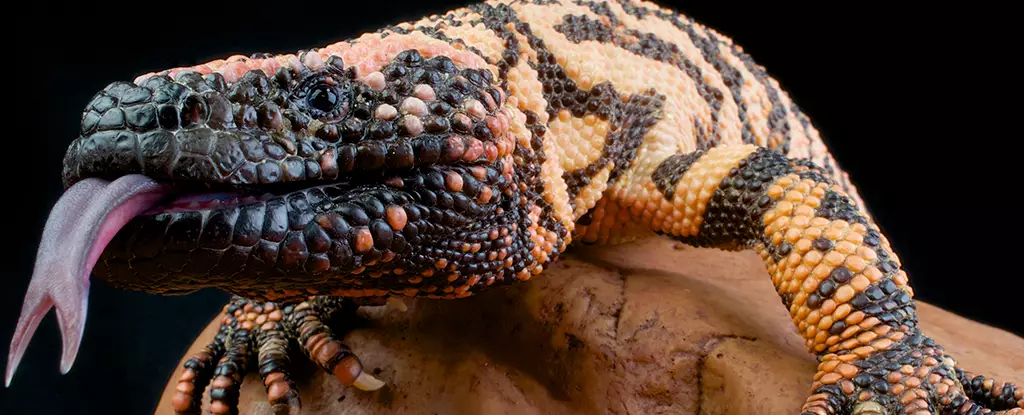The natural world remains an endless reservoir of innovative solutions, particularly in the realm of medicine. Among the most surprising contributors to modern therapeutics is the venom from a variety of animals, which has been harnessed to develop critical drugs that improve and save human lives. While the notion might conjure images of mystical potions and legendary remedies, the reality is rooted in rigorous scientific research and unexpected biological discoveries. Two conditions that have garnered attention are type 2 diabetes and obesity, for which groundbreaking treatments derived from the venom of the Gila monster have emerged. This article explores how these chemical treasures from the animal kingdom have infiltrated the medical field, offering a glimpse into the future of drug development.
While the Gila monster, a reptile native to the deserts of the southwestern United States, may evoke fear due to its toxic bite, its venom harbors a fascinating secret: components that closely resemble a hormone known as glucagon-like peptide-1 (GLP-1). In the late 1990s, endocrinologist Daniel Drucker set out on a mission to find a long-lasting GLP-1 mimic that could regulate appetite and blood sugar. Having studied the pioneering work that identified two protein sequences in Gila monster venom, Drucker’s team at the University of Toronto identified Exendin-4. This vital protein showed promising results by effectively mimicking human GLP-1 while resisting rapid breakdown by the body.
Finally, in 2005, this research bore fruit when a synthetic version of Exendin-4 received FDA approval, eventually leading to the creation of medications like Ozempic and Wegovy. These drugs have made considerable waves in treating type 2 diabetes and have recently gained traction as effective treatments for obesity—all thanks to the intuitive designs of nature. This intersection of biology and medicine highlights the potential of repurposing natural toxins into lifesaving therapies.
The story of the Gila monster is just one facet of a remarkable narrative that emphasizes how diverse members of the animal kingdom contribute to pharmacology. Consider the Brazilian viper (Bothrops jararaca), whose venom was pivotal in the development of Lisinopril—a widely used medication for controlling hypertension and heart-related ailments. The viper’s venom contains special enzyme inhibitors, which, contrary to being detrimental, serve to smooth the spread of venom throughout its prey. This intricate relationship between predator and prey has led to life-saving outcomes for humans, showcasing the double-edged nature of natural substances.
Equally impressive is the role of sea sponges, with the Caribbean sponge (Tectitethya crypta) steadily advancing chemotherapy options. The compound nucleosides, which the sponge uses for defense against foreign DNA, has resulted in the formulation of cytarabine—an essential medication for treating certain blood cancers like leukemia and non-Hodgkin’s lymphoma. The ability of these ancient organisms to produce unique compounds has become invaluable to modern medicine as researchers continue to tap into their biochemical arsenal.
Outside of metabolic conditions, animal venom has made significant strides in oncology as well. The shocking discovery by oncologist Jim Olson in 2004, where remnants of a brain tumor remained after a surgical procedure, became the catalyst for further exploration. Determined to solve this issue, he and his team turned to the venom of the deathstalker scorpion (Leiurus quinquestriatus). Chlorotoxin, a peptide found in this venom, specifically targets ion channels on certain cancerous cells. By employing cutting-edge genetic databases, they developed a derivative—Tozuleristide—that glows under near-infrared light, allowing surgeons to identify tumor cells with greater precision.
This innovative approach not only aids in surgical outcomes but also provides hope for patients facing dire circumstances. The success of chlorotoxin proves that nature’s toxic chemistry can illuminate pathways not only in the realm of pharmacology but significantly advance surgical practices.
As the journey of medicines derived from animal toxins unfolds, we are constantly reminded of nature’s ingenuity. From the Gila monster to the Brazilian viper and sea sponges, the potential for life-saving treatments is vast but contingent on our ability to responsibly explore and study these creatures and their ecosystems. The fight for biodiversity is not merely an environmental concern; it is deeply intertwined with our pursuit of health and longevity. By remaining curious and committed to unearthing the secrets embedded in nature, we may unlock therapies that were once thought impossible—proving that often, the solutions to some of our most pressing problems lie where we least expect them.

